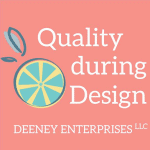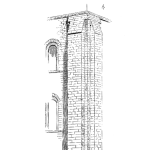
Cycles or Time
Abstract
Kirk and Fred discuss whether we should use time or number of cycles or total time a product has been available for use.
ᐅ Play Episode
Your Reliability Engineering Professional Development Site

Kirk and Fred discuss whether we should use time or number of cycles or total time a product has been available for use.
ᐅ Play Episode

Is this an attack on managers? No, it is not. It is a call for understanding and a challenge.
People who are not managers often don’t understand what challenges managers are facing. Their expectations of the managers can be unrealistic which undercuts their effectiveness and influence. This episode explores what managers are facing.
Of course, there are two sides to the issue. Many of the challenges managers face with their people are related to things that the managers are capable of controlling. That is also discussed.
Guy Kawasaki’s book “The Macintosh Way” is referenced in this episode. Guy has made a PDF version available for free at this link: TheMacintoshWay.pdf
Guy’s website is Guy Kawasaki
Edward R. Tufte’s book “Visual Explanations” is also referenced in this episode. His website is Edward Tufte website. The book’s webpage is Visual Explanations book. The specific chapter referenced in this episode was published as a booklet. It’s webpage is Visual and Statistical Thinking booklet
You can contact me via the website Way of the Quality Warrior or on LinkedIn Keith Fong
by Christopher Jackson Leave a Comment

Chris and Fred discuss how to help me, you and the people around us more aware of reliability (and reliability engineering)? Good question!
ᐅ Play Episode
by Christopher Jackson Leave a Comment

Chris and Fred discuss Military Handbook 217 Version F for the ‘Reliability Prediction of Electronic Equipment’ or MIL-HDBK 217F … and why being forced to use it is borderline evil.
ᐅ Play Episode
by Dianna Deeney Leave a Comment

Blink and you’ll miss it, Quality During Design is taking a short, well-deserved break. We’ve journeyed together through a whopping 136 episodes over the last two years and eight months, and now it’s time for us to recharge, refocus, and return with a bang in a few weeks. While we are not releasing new episodes during this period, we’re excited to stay connected with you through our weekly email newsletters, loaded with the same quality content, professional wisdom, and valuable tips that you’ve come to expect from us.
Is there a particular topic you’d love us to tackle in future episodes? Now is the perfect time to share your thoughts! We’re eager to hear from you, so reach out via email or social media with your questions, feedback, or suggestions. Let’s continue to build this community together during our short hiatus.
I want to thank you for your support and participation. We’re already excited to return to your favorite podcast platforms soon with a fresh perspective, exciting guests, and a renewed commitment to bringing you the best insights into quality and reliability in design. Until then, stay inspired, curious, and in touch!
by Fred Schenkelberg Leave a Comment

We do not “do reliability”. “Reliability” doesn’t just happen to a product – well, it does with or without our intervention. To achieve the stated reliability objectives for a new product or production line, we can trust to luck or sort out what needs to happen to realize the objectives. [Read more…]
by Mike Konrad Leave a Comment

We are all aware of the supply chain issues our industry has faced. Beginning with electronic components, it has spread to so many other types of parts are industry relies on. Fortunately, it looks like we are beginning to come out the other end of the supply chain shortage.
But the supply chain problems have further spread to the labor market. If you are in a position to hire people for your company, you know firsthand how difficult that process can be today.
Adding to the level of labor acquisition difficulties is the great “Silver Tsunami”, otherwise known as the great retirement.
As I mentioned on our last episode, episode number 130, the fact is, baby boomers are entering retirement in greater numbers. According to government data, from now until 2030, 10,000 Baby Boomers each day will hit retirement age. Millions will begin to officially retire.
Some of these retirees are designated subject matter experts within their companies. Not only are people retiring, they are taking with them a vault of valuable knowledge.
This has created an even larger demand for consultants within our industry. I’ve had several industry consultants on my show over the last few years, including today’s guest.
And who is today’s Guest? Legendary industry consultant, Bob Willis. If you’ve been in this industry longer than 18 seconds, there’s a good chance you’ve at least heard his name. If you’ve been in this industry for virtually any length of time, there’s a good chance you’ve seen his videos, read his books, or watched him present at numerous industry conferences and symposiums. If I reviewed Bob’s complete professional biography, it would take an entire episode. Here’s my conversation with my friend and colleague, Bob Willis.
During our conversation, we discussed Bob’s newest book, “Robotic Soldering Inspection and Defect Guide”.
Anyone who makes a donation to Bob’s chosen charity will receive a download of his book as well as access to Bob’s complete book collection:
• Robotic Soldering Inspection and Defect Guide
• Pin in Hole Intrusive Reflow Desing, Assembly & Defect Guide
• Package On Package Assembly Inspection & Quality Control
• Solder Paste Print Inspection & Defect Guide
• Lead-Free Defect Guide 3
• Conformal Coating Inspection & Defect Guide
• QFN LGA Assembly Inspection & Defect Guide
• PCB Surface Finishes Inspection & Defect Guide
• Cleaning & Contamination Defect Guide
Click below for more information:
https://www.justgiving.com/page/bob-willis-roboticsolderingbook

Kirk and Fred discuss using Design for Reliability (DFR) for reliability development of a new product.
ᐅ Play Episode

Kirk and Fred discuss the use and tradeoffs of using external environmental testing and failure analysis labs versus having in-house equipment
ᐅ Play Episode


Dianna Deeney interviews Jeffrey Lewis about new product development: how timing the right activities can lead to product success.
This interview is part of our series, “A Chat with Cross Functional Experts”. Our focus is speaking with people that are typically part of a cross-functional team within engineering projects. We discuss their viewpoints and perspectives regarding new products, the values they bring to new product development, and how they’re involved and work with product design engineering teammates.
Jeff is a senior director of corporate quality at Globus Medical. He’s a quality, reliability, risk management and product development professional. He is experienced at building quality into products, manufacturing processes and all business processes. Jeff is an accomplished executive with experience directing design and development and quality staff to meet company goals and objectives.
Jeff’s wealth of experience and insights provide a roadmap for quality and reliability in product design, making it a must-listen for all in product development and design.

But there are other things in the martial arts that could be adopted to drive continuous improvement. In particular, the idea of the “yielding art” of Jiu Jitsu where the opponents’ energy is used to defeat them. This episode discusses applying that idea in several contexts when solving problems.
Paul O’Neill, CEO of Alcoa from 1981 to 1999 is referenced. After listening to this episode, check out these videos on YouTube. This is a leader who demonstrates how to use organizational energy to overcome obstacles and attain excellence.
by Philip Sage Leave a Comment

Philip and Fred discuss the first basic steps when confronted with a pile of data.
by Christopher Jackson Leave a Comment

Chris and Fred discuss how to approach reliability objectives and testing for consumable elements of a product or system.
ᐅ Play Episode
by Dianna Deeney Leave a Comment

 What if you could shift your approach in product design to focus on what really matters, and thereby create products that truly resonate with your customers?
What if you could shift your approach in product design to focus on what really matters, and thereby create products that truly resonate with your customers?
We’ve been discovering the importance of considering a variety of inputs early in the design process. Now, we navigate the challenge of prioritizing these inputs to make the crucial trade-off decisions that can make or break your product.
We journey through the world of early concept development, discussing how setting priorities can ensure we deliver what’s truly important. We look at how these priorities can guide the product development process and how they can be adjusted when new information arises. From surprising test failures to unexpected customer issues, we explore how to reassess our priorities based on these fresh insights.
Along the way, I’ll be sharing more tools and techniques from previous episodes to help you prioritize your ideas effectively. Get ready to enhance your approach to product design and development and create products that your customers will love!
by Philip Sage Leave a Comment

Philip and Fred discuss a fundamental element of all statistical analysis.
ᐅ Play Episode